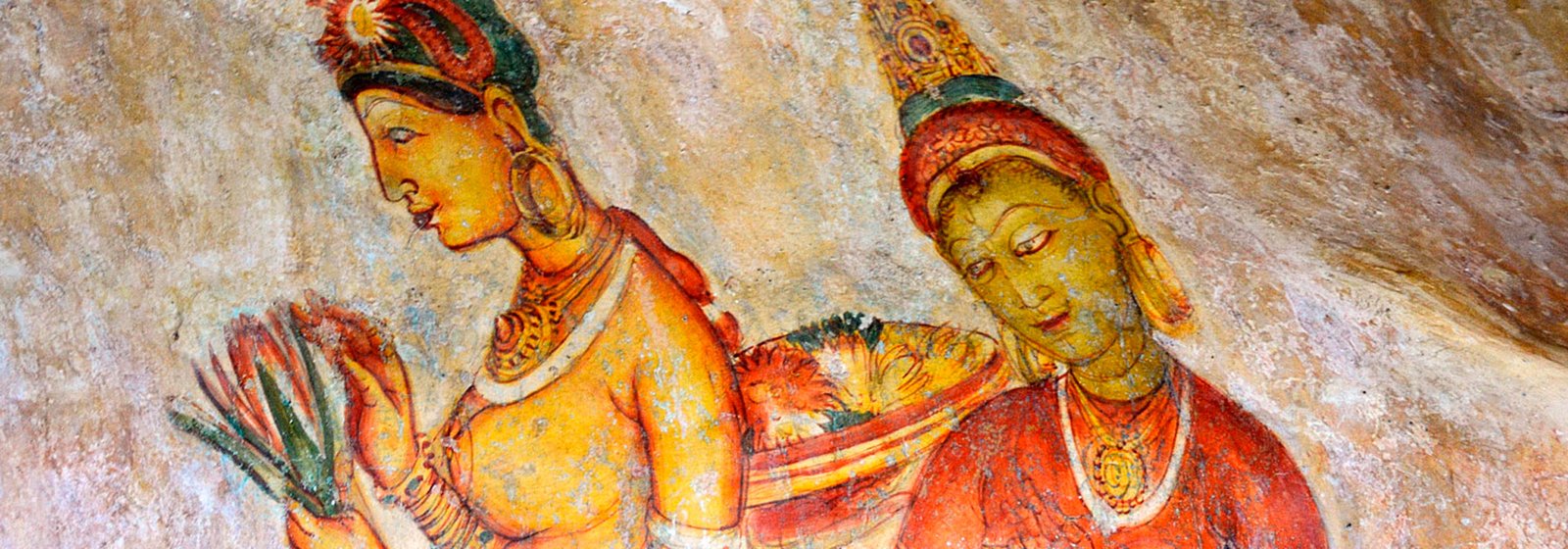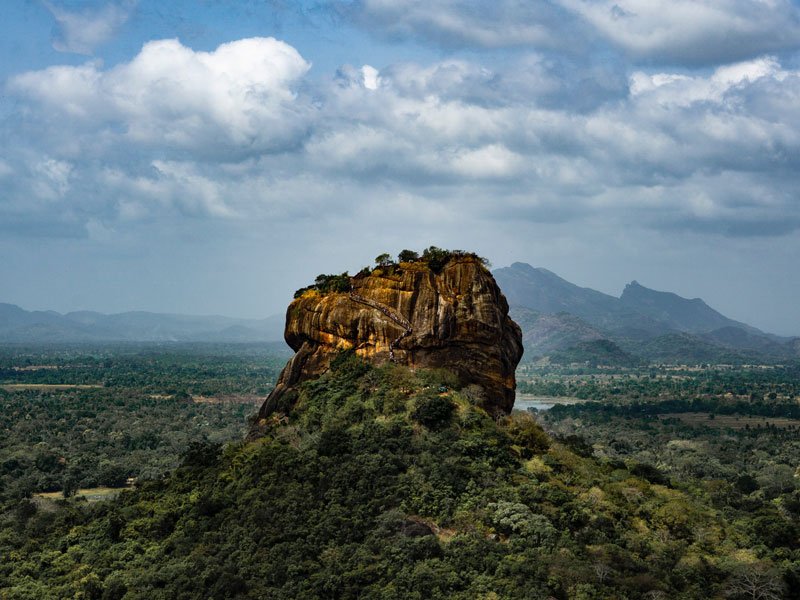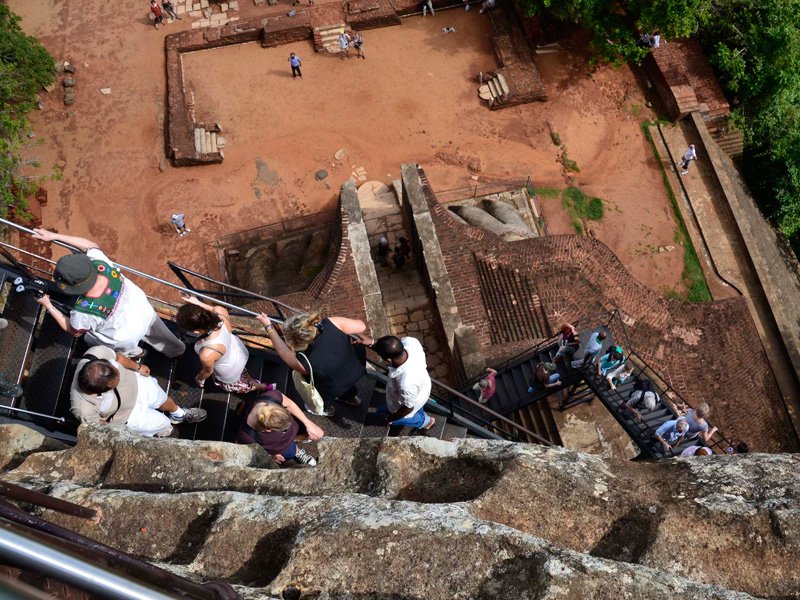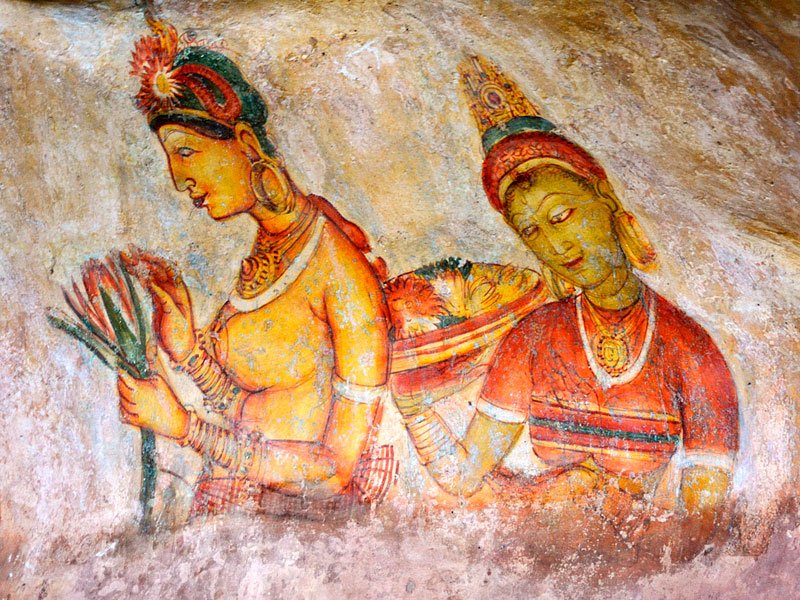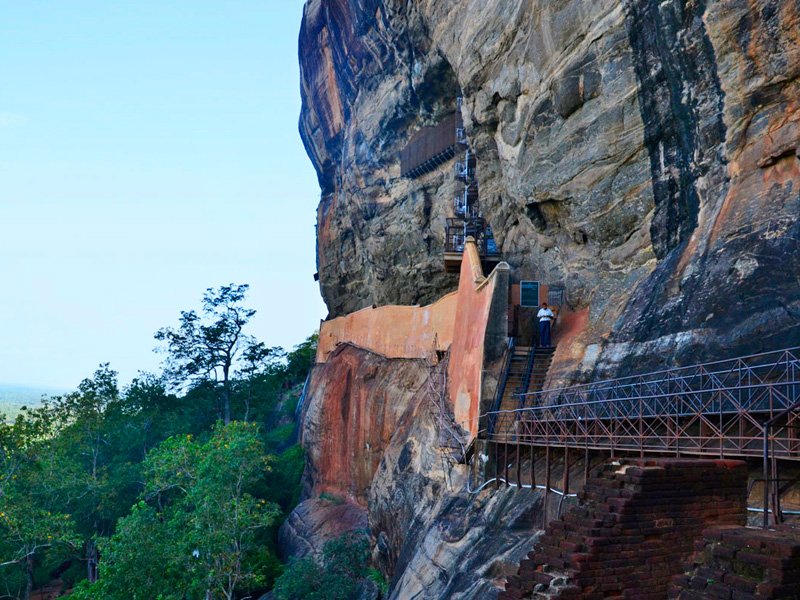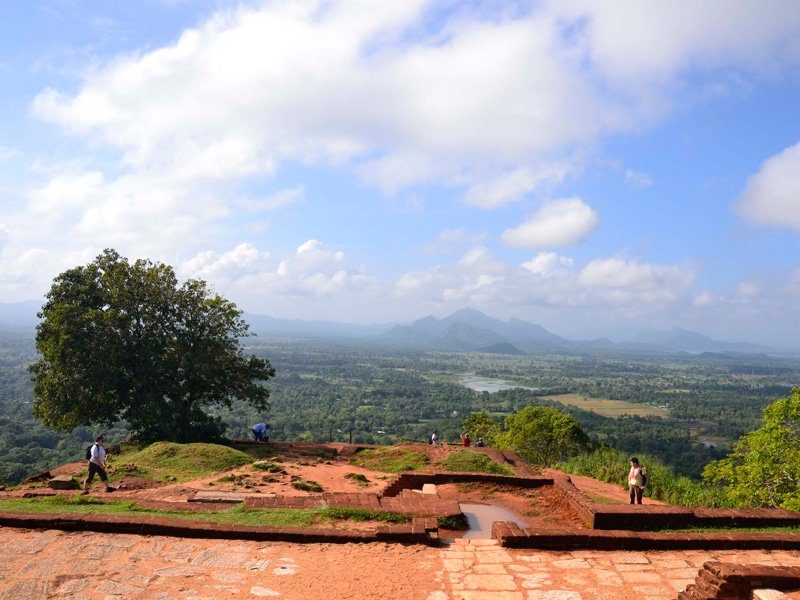Sigiriya has it all — a history full of intrigue, astonishing frescoes of bare-breasted maidens painted 15 centuries ago, a wall covered in graffiti that is more than 1,000 years old and, to top it all, Asia’s oldest surviving landscape garden.
Sigiriya is famous for its 200 metre high stone fortress and palace ruins which are surrounded by the remains of an extensive network of gardens, reservoirs and other structures. It refuses to reveal its secrets easily, and you’ll have to climb a series of staircases attached to walls to reach the top that contains the ruins of an ancient civilisation – the short-lived kingdom of Kassapa.
Built by an obsessed monarch in the 5th century, Sigiriya is an astonishing feat of engineering and construction. When the capital and the royal palace was abandoned after the king’s death, it was used as a Buddhist monastery until the 14th century. Sigiriya today is a UNESCO listed World Heritage Site. It is one of the best-preserved examples of ancient urban planning.
Sights to see at Sigiriya
GARDENS
The gardens of the Sigiriya are among the oldest landscaped gardens in the world. the gardens are divided into three sections – water, cave and boulder and also terraced gardens. They are located in the western part of the rock and are with a complex hydraulic system, which consists of canals, locks, lakes, dams, bridges, fountains, as well as surface and underground water pumps.
Water gardens
The miniature water garden just inside the inner wall of the western precinct consists of water pavilions, pools, cisterns, courtyards and conduits. The pebbled or marbled water-surrounds covered by shallow slowly moving water would have served as cooling devices with an aesthetic appeal.
The largest water garden has a central island surrounded by water. This was created 5 centuries before those at Angkor in Cambodia or Mughal gardens in India. The central island would have been occupied by a large pavilion. The water is in four L-shaped pools, connected by underground water conduits at varying depths, to provide different water levels.
Cave and Boulder Garden
The boulder garden at a higher level from the symmetrical water garden is a totally different asymmetrical concept, with winding pathways and natural boulders. Almost every rock and boulder in this garden must have had a building of brick and timber. It also has the Cistern Rock which has a large cistern made of huge slabs of granite. There is also the Audience Hall rock, with a 5-metre long throne carved out of the rock.
Terrace Garden
The Terrace Garden at the base of the rock is fashioned out of the natural hill, made with rubble retaining walls. The Palace garden on the summit was the domestic garden with its terraces and rock-cut pools.
FRESCOES
Protected in a small, sheltered depression a hundred meters above ground, the frescoes were an integral part of the overall awe-inspiring sight and were part of a huge tapestry that extended in a gigantic band around the waist of the rock. This immense picture gallery of over 500 semi-naked females covered an area of approximately 5600 sq meters.
Over the years most of the frescoes were lost due to environmental factors such as wind and rain as well as being intentionally removed due to human intervention, only nineteen paintings survive today.
Some say they are celestial nymphs carrying flowers to shower upon kings and mortals below. Others suggest that they are queens and concubines. Some even suggest that they are the manifestations of the goddess Tara. They have been the subject of speculation for nearly one thousand six hundred years. The names of the ladies and the artists who painted them are lost to history. Their legacy has survived for over half a million days, a testament to the genius of their creators and the king who commissioned them.
MIRROR WALL
The term Mirror Wall is an attempt at translating the word used by the ancient writers. They used the term Kat Bitha for this wall enclosing a walk or gallery leading up to the Lion Staircase. The lime plaster of the brick masonry wall had been so highly polished, that the king could see himself whilst he walked alongside it. Today, fifteen centuries later, the shine on this wall can still be seen.
GRAFFITI
Since Sigiriya was abandoned after Kasyapa’s death, visitors had been attracted to it from around the 6th century until about the 13th century. They had come to see the paintings and the palace on the summit and the garden below, even as they do today. Inspired by the wonder they saw, they transferred their thoughts into poetry, which they wrote on the Mirror Wall.
A total of nearly 1,500 writings have now been deciphered. Most of these graffiti were addressed to the ladies in the paintings.




